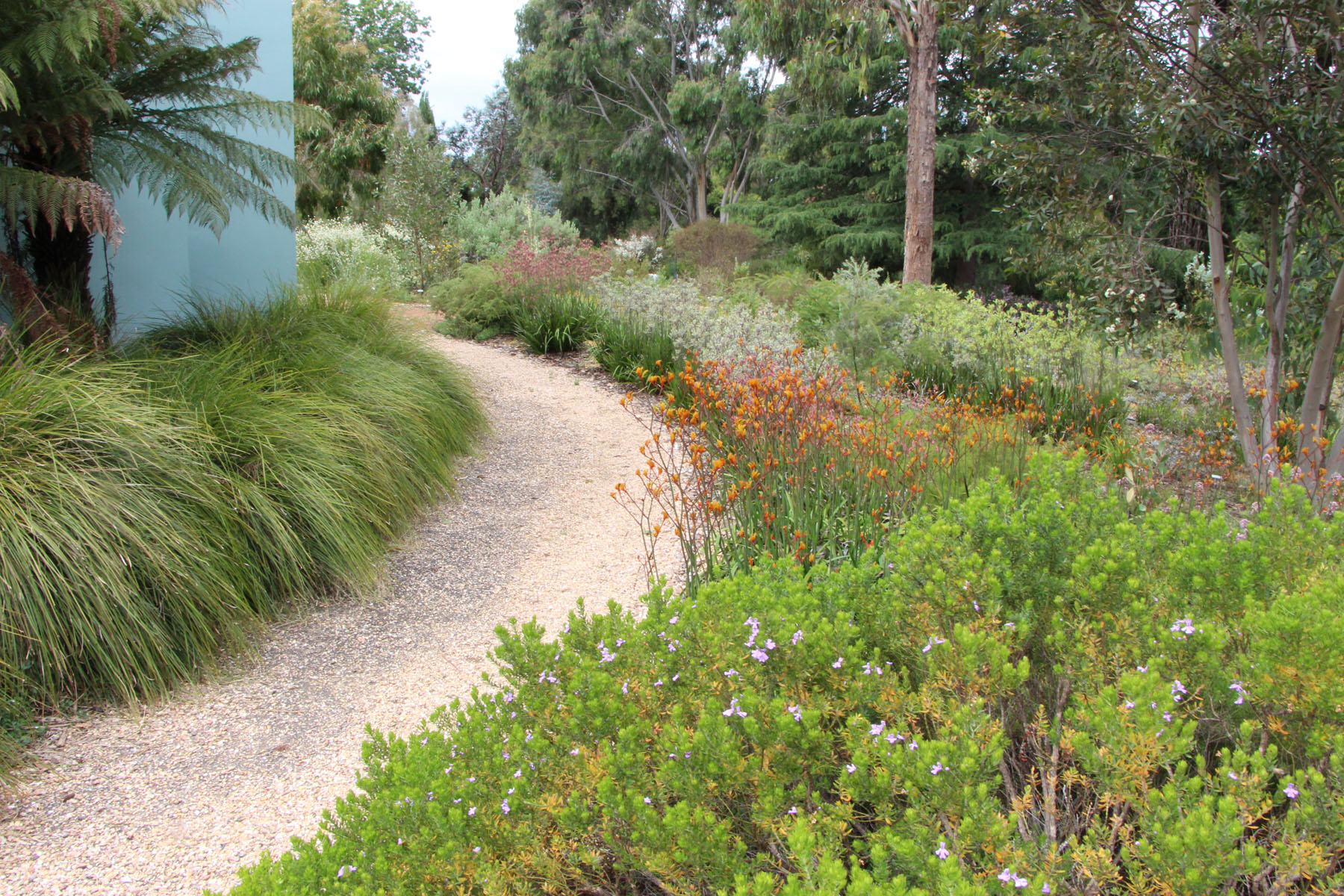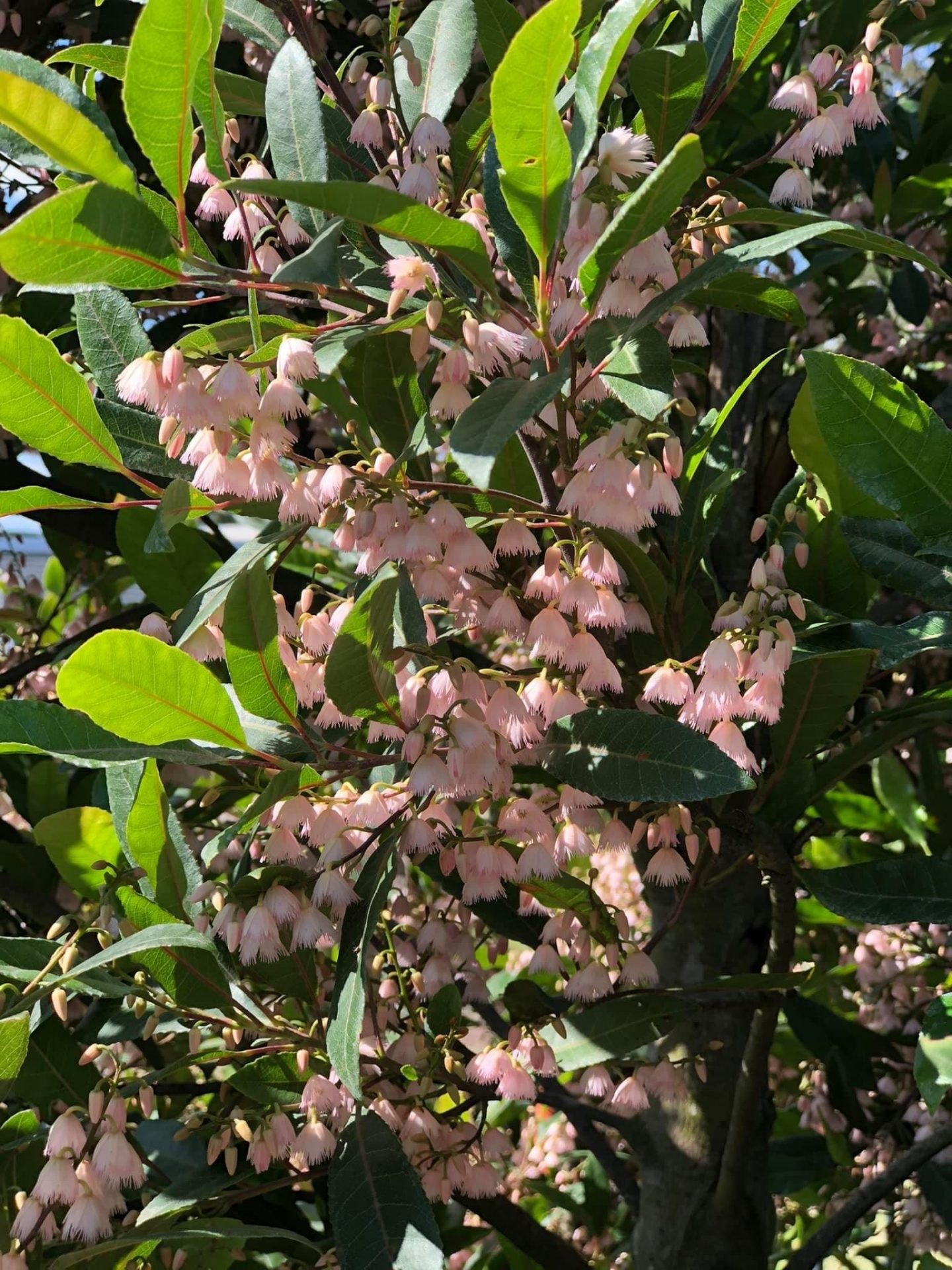Back in 2006, we realised that we needed to alter our garden design to prepare for climate change. Happily we made a start and here is the outcome.
Evolving garden design for climate change
Our climate change imperative came in 2006, only three years after we began planting our Canberra garden. We attended a life-changing afternoon visit to John Weatherstone’s property Lyndfield Park, in Gundaroo. There, the enlightened owner had planted 100,000 trees of many species, both native and exotic. His aim was to mitigate the effects of drought on his land. After suffering devastating effects from the 1980’s drought, John found that the shade from these trees encouraged grass to grow to feed his stock. This was against the common farming practice and belief of the time. He also found that his stock were much healthier and content lying in the heavy shade of many trees. Previously they huddled under one wispy paddock tree.
Designing for climate change
We came home inspired to plant more trees, even in the meadow area of our garden, which was originally designed to be in full sun. As a result, we planted Eucalyptus camphora, E. luehmanniana, E. polyanthmos, E. maidenii and E. stricta. In 2005, we had planted E. sideroxylon rosea to make the new house ‘sit down’ in its environment. We added another Melia azedarach to the one already planted as part of our foundation planting.
We were also influenced by the garden of Maria Hitchcock in Armidale. Here, Maria has planted many eucalypts to protect her plants from frost. Most of her gardening is accomplished under high shade. We realised that we could not continue to plant in full sun, given the variable, harsh and changing climate in Canberra.
New plantings for microclimates


We needed to create microclimates in our garden to ensure that the plants would survive. I am happy to say that all of the trees we planted in 2006 survive and thrive. The exception is the original E. sideroxylon rosea, which lost half of its mass in a 2021 storm. Unfortunately it had to be removed for safety reasons.


The resultant high shade has made all the difference to our plants and given them the protection that they need from sun, frost and wind.
Good rainfall leading to copious flowering

Rainfall in our garden is very variable. For several months of the year we can have no rainfall at all, or very low rainfall. The highest total for one month so far is 237mm in November 2021, a La Nina year. The total rainfall for one year has varied from 376mm in 2018 to 1,157mm in 2021, a factor of three times difference. On average the month of lowest rainfall is May and highest is November.
In the La Nina year, 2021-2002, we had the best flowering ever of our plantings of Landscape Line Kangaroo Paws. These are bred by Angus Stewart. We get flowers each year from Landscape Orange, Red, Pink, Lime and Violet, but never such pools of colour as we have had this year.
Another blessing from the La Nina rain is flowering of our twenty Blueberry Ash, Elaeocarpus reticulatus ‘Prima Donna’. They only bloom when they receive generous ‘Sydney style’ rain, not the usual meagre Canberra showers. The dainty fringed pink bells of the Blueberry Ash and the following bright blue berries make up for the climax weeds of the La Nina years. We feel very fortunate to have adapted our garden design early in order to accommodate climate change.
Image Ben Walcott
To find out more about gardening in Canberra with native plants, check out the Australian Native Plants Society Canberra.
 Australian Native Plants Society (Australia)
Australian Native Plants Society (Australia)